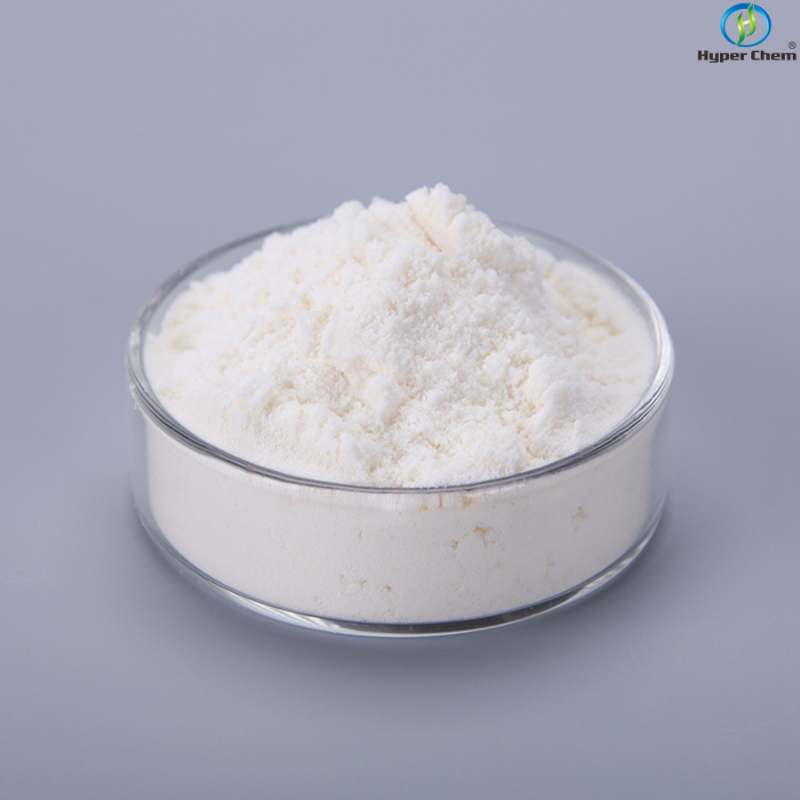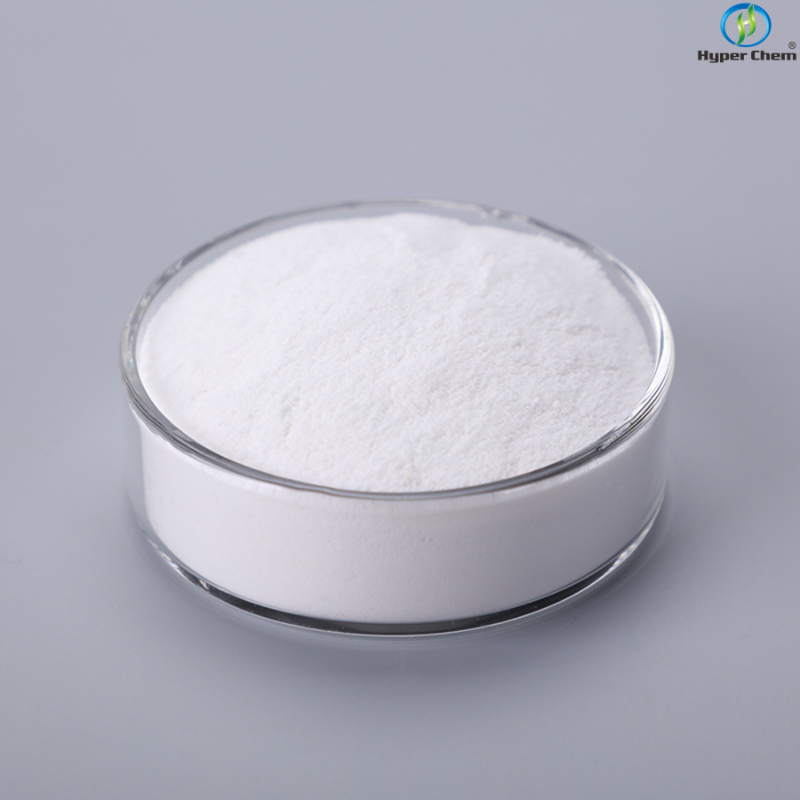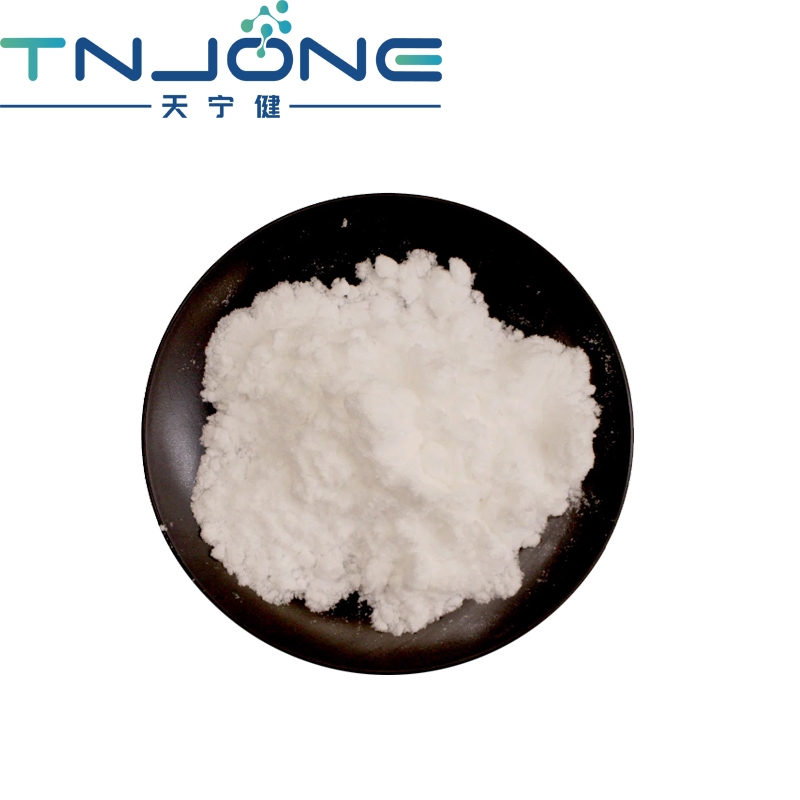-
Categories
-
Pharmaceutical Intermediates
-
Active Pharmaceutical Ingredients
-
Food Additives
- Industrial Coatings
- Agrochemicals
- Dyes and Pigments
- Surfactant
- Flavors and Fragrances
- Chemical Reagents
- Catalyst and Auxiliary
- Natural Products
- Inorganic Chemistry
-
Organic Chemistry
-
Biochemical Engineering
- Analytical Chemistry
-
Cosmetic Ingredient
- Water Treatment Chemical
-
Pharmaceutical Intermediates
Promotion
ECHEMI Mall
Wholesale
Weekly Price
Exhibition
News
-
Trade Service
Relapsed/refractory acute B-precursor lymphocytic leukemia (R/R B-ALL) is an aggressive malignancy with a poor prognosis
.
Among children with ALL, >98% achieve complete remission (CR) with first-line therapy, but 15%-20% eventually relapse
.
70%-98% of children with a first relapse can achieve a second CR with standard chemotherapy, depending on the patient's risk stratification
.
Only 44% and 27% of children with second or third bone marrow recurrence, respectively, were able to achieve CR again, and the prognosis was poor
.
Hematopoietic stem cell transplantation (HSCT) in children with CR with negative measurable residual disease (MRD) was positively associated with event-free survival (EFS)
.
Several previous studies have shown that pre-transplant MRD-positive children are more likely to relapse than pre-transplant MRD-negative children
.
Children who achieve a second CR have a 5-year disease-free survival rate of 40% to 50%, depending on the patient's risk stratification
.
Therefore, although the selection of appropriate treatment regimens based on risk stratification has improved the survival of children, drugs with new mechanisms of action are still needed to improve the poor clinical outcomes of children with R/R B-ALL
.
Blinatumomab is a bispecific T cell engager, an immuno-oncology drug that kills CD19+ B cells by activating CD3+ cytotoxic T cells
.
Studies have confirmed that belintuzumab has good efficacy and safety in children, adolescents and young adults (AYA) and adults with R/R B-ALL
.
Based on this, some researchers carried out the RIALTO study to evaluate the efficacy and safety of belintuumab in children with R/R B-ALL
.
Methods The RIALTO study was a multicenter, open-label, drug extension study with investigators from 16 clinical trial centers in Europe and the United States, including children diagnosed between January 2015 and July 2018
.
Inclusion criteria for children: ① aged more than 28 days and less than 18 years old; ② CD19+ R/R B-ALL with 2 or more bone marrow relapses (including M3 bone marrow [≥25% blasts], M2 bone marrow [ ≥5% but <25% blasts] and M1 bone marrow [<5% morphological blasts] with MRD ≥10-3) or bone marrow relapse after allogeneic hematopoietic stem cell transplantation (allo-HSCT) or refractory to prior therapy
.
Children who had been previously treated with belintuumab but whose leukemia cells still expressed CD19 and were intolerant or refractory to belintuumab were included in the study
.
Eligible children received belintuumab intravenously for a maximum of 5 treatment cycles (2 induction cycles and 3 consolidation cycle)
.
Only patients who achieved a CR (meeting the M1 marrow definition) after the induction cycle could receive up to 3 cycles of consolidation with belintuumab
.
For M3 bone marrow patients, the initial dose of cycle 1 was 5 μg/m2 per day for the first 7 days, gradually increasing to 15 μg/m2 per day from day 8 (week 2) to day 29 (week 4), and Maintain this dose in all subsequent cycles
.
For patients with M2 bone marrow or M1 bone marrow MRD ≥10-3, receive belintoumumab 15 μg/m2 per day per cycle
.
To prevent first-dose adverse events (AEs), children received dexamethasone at a dose of 24 mg daily for 4 days before starting mAb therapy
.
Patients who achieve a CR after the first cycle of treatment can receive allo-HSCT
.
The primary endpoint was the incidence of 'treatment' adverse events (TEAEs) and treatment-related adverse events (TRAEs)
.
Secondary endpoints included CR and MRD response rates, RFS, OS, allo-HSCT rates, and 100-day mortality after allo-HSCT across 2 belintoumumab cycles
.
TEAE was defined as any adverse event that occurred between the first infusion of belintuumab and 30 days after the end of the infusion
.
A TRAE is an adverse event considered by the investigator to be treatment-related
.
TEAE and TRAE were graded according to the National Cancer Institute Common Terminology Criteria for Adverse Events
.
On day 29 of each mAb treatment cycle and at every 6-month follow-up, patients underwent bone marrow aspiration or biopsy for efficacy monitoring
.
CR is subdivided into CR, CRh and CRi
.
CR was defined as <5% bone marrow blasts, no evidence of disease, and complete recovery of peripheral blood counts (platelets >100 × 109/L and absolute neutrophil count >1.
0 × 109/L)
.
CRh is CR with partial recovery of peripheral blood counts (platelets >50×109/L but ≤100×109/L and/or absolute neutrophil count >0.
5×109/L but ≤1.
0×109/L)
.
CRi was defined as CR with incomplete recovery of peripheral blood counts
.
MRD was assessed by PCR or flow cytometry, and MRD-negative was MRD<10-3
.
RESULTS: Between January 2015 and July 2018, a total of 110 children were included in the study, and the data collection deadline was January 10, 2020
.
The median age of the patients was 8.
5 (0.
4-17) years, 56.
4% were male, and 88.
2% had ≥5% blasts at baseline (Figure 1)
.
Fifty-five percent of patients had ≥2 relapses, 40% relapsed after allo-HSCT, 15% had primary refractory disease, and 21% were refractory to reinduction therapy
.
Thirty-two patients (29.
1%) had recurrent genetic abnormalities, the most common being MLL rearrangement (18 patients; 16.
4%), and 4 patients (3.
6%) had constitutional mosaic trisomy 21
.
Figure 1 For efficacy, all patients received at least 1 belintuumab treatment; 43 (39.
1%) completed 2 cycles, 14 (12.
7%) completed 3 cycles, and 6 (5.
5%) completed 3 cycles.
%) completed 4 cycles, and 5 patients (4.
5%) completed 5 cycles
.
Fifty-seven (52%) of 110 patients achieved a CR for MRD response, and the rate of CR for MRD response was not affected in children stratified by molecular/cytogenetics as high risk
.
Median OS was 14.
6 months (95% CI: 11.
0 - not estimable), and MRD responders had a significant improvement in median OS compared with MRD nonresponders (not estimable vs 9.
3 months; hazard ratio, 0.
18; 95 %CI: 0.
08-0.
39)
.
Of the patients who achieved a CR after 2 treatment cycles, 73.
5% (95% CI: 61.
4%-83.
5%) received allo-HSCT, and children who received allo-HSCT compared with those who did not receive allo-HSCT at one year.
The OS rate was higher (87% vs 29%), as shown in Figure 2
.
Figure 2 For safety, the incidence of grade 3 or 4 cytokine release syndrome (n=2; 1.
8%) and neurological events (n=4; 3.
6%) was low, and no belinto-o Monoclonal antibody-related fatal adverse events, as shown in Figure 3
.
Figure 3.
Conclusions of the study Data from the RIALTO trial support belintuzumab as salvage therapy for children with R/R B-ALL
.
Belintuumab is of great value in vulnerable children (eg, those with Down syndrome) and those with high-risk molecular/cytogenetic features (eg, TCF3-HLF+B-ALL)
.
Reference: Locatelli, F.
et al.
Blinatumomab in pediatric relapsed/refractory B-cell acute lymphoblastic leukemia: RIALTO expanded access study final analysis.
Blood Adv.
6, 1004–1014 (2022).
Click "read the original text" and let's go together progress
.
Among children with ALL, >98% achieve complete remission (CR) with first-line therapy, but 15%-20% eventually relapse
.
70%-98% of children with a first relapse can achieve a second CR with standard chemotherapy, depending on the patient's risk stratification
.
Only 44% and 27% of children with second or third bone marrow recurrence, respectively, were able to achieve CR again, and the prognosis was poor
.
Hematopoietic stem cell transplantation (HSCT) in children with CR with negative measurable residual disease (MRD) was positively associated with event-free survival (EFS)
.
Several previous studies have shown that pre-transplant MRD-positive children are more likely to relapse than pre-transplant MRD-negative children
.
Children who achieve a second CR have a 5-year disease-free survival rate of 40% to 50%, depending on the patient's risk stratification
.
Therefore, although the selection of appropriate treatment regimens based on risk stratification has improved the survival of children, drugs with new mechanisms of action are still needed to improve the poor clinical outcomes of children with R/R B-ALL
.
Blinatumomab is a bispecific T cell engager, an immuno-oncology drug that kills CD19+ B cells by activating CD3+ cytotoxic T cells
.
Studies have confirmed that belintuzumab has good efficacy and safety in children, adolescents and young adults (AYA) and adults with R/R B-ALL
.
Based on this, some researchers carried out the RIALTO study to evaluate the efficacy and safety of belintuumab in children with R/R B-ALL
.
Methods The RIALTO study was a multicenter, open-label, drug extension study with investigators from 16 clinical trial centers in Europe and the United States, including children diagnosed between January 2015 and July 2018
.
Inclusion criteria for children: ① aged more than 28 days and less than 18 years old; ② CD19+ R/R B-ALL with 2 or more bone marrow relapses (including M3 bone marrow [≥25% blasts], M2 bone marrow [ ≥5% but <25% blasts] and M1 bone marrow [<5% morphological blasts] with MRD ≥10-3) or bone marrow relapse after allogeneic hematopoietic stem cell transplantation (allo-HSCT) or refractory to prior therapy
.
Children who had been previously treated with belintuumab but whose leukemia cells still expressed CD19 and were intolerant or refractory to belintuumab were included in the study
.
Eligible children received belintuumab intravenously for a maximum of 5 treatment cycles (2 induction cycles and 3 consolidation cycle)
.
Only patients who achieved a CR (meeting the M1 marrow definition) after the induction cycle could receive up to 3 cycles of consolidation with belintuumab
.
For M3 bone marrow patients, the initial dose of cycle 1 was 5 μg/m2 per day for the first 7 days, gradually increasing to 15 μg/m2 per day from day 8 (week 2) to day 29 (week 4), and Maintain this dose in all subsequent cycles
.
For patients with M2 bone marrow or M1 bone marrow MRD ≥10-3, receive belintoumumab 15 μg/m2 per day per cycle
.
To prevent first-dose adverse events (AEs), children received dexamethasone at a dose of 24 mg daily for 4 days before starting mAb therapy
.
Patients who achieve a CR after the first cycle of treatment can receive allo-HSCT
.
The primary endpoint was the incidence of 'treatment' adverse events (TEAEs) and treatment-related adverse events (TRAEs)
.
Secondary endpoints included CR and MRD response rates, RFS, OS, allo-HSCT rates, and 100-day mortality after allo-HSCT across 2 belintoumumab cycles
.
TEAE was defined as any adverse event that occurred between the first infusion of belintuumab and 30 days after the end of the infusion
.
A TRAE is an adverse event considered by the investigator to be treatment-related
.
TEAE and TRAE were graded according to the National Cancer Institute Common Terminology Criteria for Adverse Events
.
On day 29 of each mAb treatment cycle and at every 6-month follow-up, patients underwent bone marrow aspiration or biopsy for efficacy monitoring
.
CR is subdivided into CR, CRh and CRi
.
CR was defined as <5% bone marrow blasts, no evidence of disease, and complete recovery of peripheral blood counts (platelets >100 × 109/L and absolute neutrophil count >1.
0 × 109/L)
.
CRh is CR with partial recovery of peripheral blood counts (platelets >50×109/L but ≤100×109/L and/or absolute neutrophil count >0.
5×109/L but ≤1.
0×109/L)
.
CRi was defined as CR with incomplete recovery of peripheral blood counts
.
MRD was assessed by PCR or flow cytometry, and MRD-negative was MRD<10-3
.
RESULTS: Between January 2015 and July 2018, a total of 110 children were included in the study, and the data collection deadline was January 10, 2020
.
The median age of the patients was 8.
5 (0.
4-17) years, 56.
4% were male, and 88.
2% had ≥5% blasts at baseline (Figure 1)
.
Fifty-five percent of patients had ≥2 relapses, 40% relapsed after allo-HSCT, 15% had primary refractory disease, and 21% were refractory to reinduction therapy
.
Thirty-two patients (29.
1%) had recurrent genetic abnormalities, the most common being MLL rearrangement (18 patients; 16.
4%), and 4 patients (3.
6%) had constitutional mosaic trisomy 21
.
Figure 1 For efficacy, all patients received at least 1 belintuumab treatment; 43 (39.
1%) completed 2 cycles, 14 (12.
7%) completed 3 cycles, and 6 (5.
5%) completed 3 cycles.
%) completed 4 cycles, and 5 patients (4.
5%) completed 5 cycles
.
Fifty-seven (52%) of 110 patients achieved a CR for MRD response, and the rate of CR for MRD response was not affected in children stratified by molecular/cytogenetics as high risk
.
Median OS was 14.
6 months (95% CI: 11.
0 - not estimable), and MRD responders had a significant improvement in median OS compared with MRD nonresponders (not estimable vs 9.
3 months; hazard ratio, 0.
18; 95 %CI: 0.
08-0.
39)
.
Of the patients who achieved a CR after 2 treatment cycles, 73.
5% (95% CI: 61.
4%-83.
5%) received allo-HSCT, and children who received allo-HSCT compared with those who did not receive allo-HSCT at one year.
The OS rate was higher (87% vs 29%), as shown in Figure 2
.
Figure 2 For safety, the incidence of grade 3 or 4 cytokine release syndrome (n=2; 1.
8%) and neurological events (n=4; 3.
6%) was low, and no belinto-o Monoclonal antibody-related fatal adverse events, as shown in Figure 3
.
Figure 3.
Conclusions of the study Data from the RIALTO trial support belintuzumab as salvage therapy for children with R/R B-ALL
.
Belintuumab is of great value in vulnerable children (eg, those with Down syndrome) and those with high-risk molecular/cytogenetic features (eg, TCF3-HLF+B-ALL)
.
Reference: Locatelli, F.
et al.
Blinatumomab in pediatric relapsed/refractory B-cell acute lymphoblastic leukemia: RIALTO expanded access study final analysis.
Blood Adv.
6, 1004–1014 (2022).
Click "read the original text" and let's go together progress







